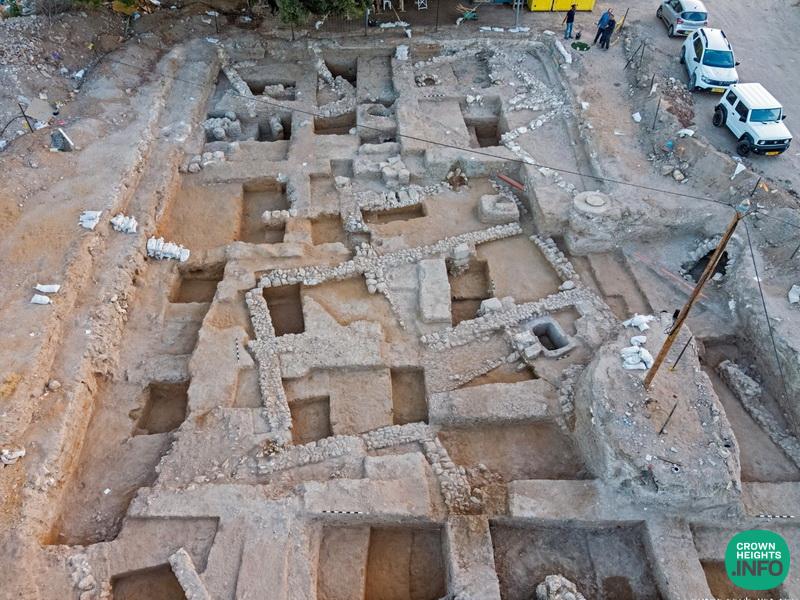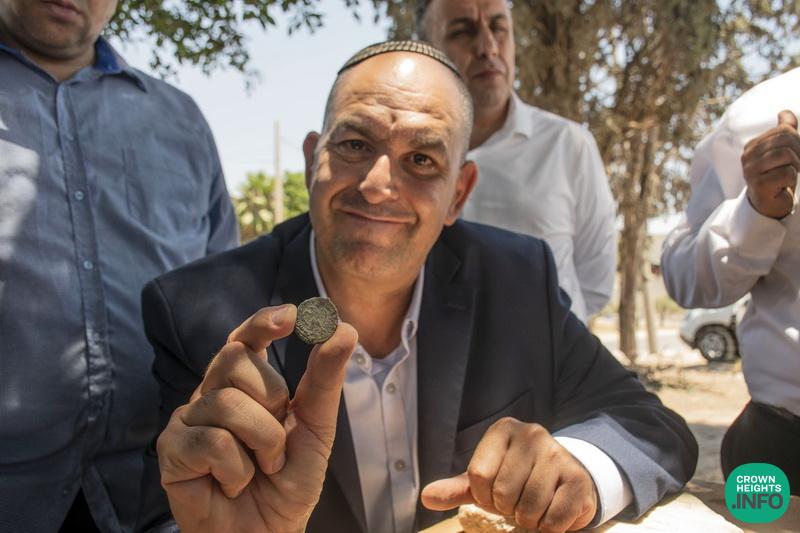
Discovery in Lod Reveals Evidence of Last Jewish Revolt Against Roman Rule in Israel
Joint Israel Antiquities Authority and Lod Municipality excavations revealed the remains of a destroyed Jewish public building. The floor hid a hoard of 94 coins, which no one came back to collect – until now.
The finds will be published in conjunction with the Central Israel Region Archaeological Conference to be held on June 20.
For the very first time, evidence has been found in Lod from the Gallus Revolt, the last Jewish resistance against Roman rule. The dramatic discovery – a large public building, in whose foundations a 1650-year-old hoard was hidden, will be publicized in a new book commensurate with the annual Central Israel Region Archaeological Conference, open to the public free of charge. The conference will be held in the Eretz Yisrael Museum in Tel Aviv and jointly hosted by Tel Aviv University, Bar Ilan University, and the Israel Antiquities Authority.
An excavation on Nordau Street in Lod, led by the Israel Antiquities Authority and funded by the Lod Municipality, uncovered a public building from the Late Roman—Early Byzantine period that suffered violent destruction. Its foundations held 94 silver and bronze coins dating between 221—354 CE, which were deliberately placed there – in the hopes of returning to collect them when the situation would calm. The latest coins are dated from the time of the Gallus Revolt (351-354 CE). Though written evidence is sparse regarding this revolt, there are texts reporting that major Jewish communities such as Lod, Zipori and Tiberias were destroyed by the forces of Roman Ceasar Flavius Constantinus Gallus.
Among the various finds in the building were impressive stone and marble artifacts; Greek, Hebrew and Latin inscriptions, and one inscription bearing the name of a Jewish man from a priestly family, which is still being studied.
These inscriptions, coupled with the complete absence of pig bones from the bone assemblage uncovered in this site, attest to this building’s association with the Jewish community.
According to the site excavators, Shahar Krispin and Mor Viezel of the Israel Antiquities Authority, “In all likelihood this is a magnificent Jewish building that housed the city’s elders. From Talmudic writings we know that Lod was a most significant Jews center in the aftermath of the Second Temple’s destruction in Jerusalem. Sone of the renowned ‘Sages of Lod’ are Rabbi Eliezer ben Horkanos, Rabbi Tarfon, Rabbi Akiva, Rabbi Yosi HaGalili and many more. This building, destroyed down to its very foundation, is a clear indication that the revolt was forcefully put down with violence and cruelty, and was not simply a local uprising event, as some earlier studies contended. This is the singular witness, thus far, to the extent and power of this revolt in Lod, located in the country’s center.”
The annual Central Israel Region Archaeological Conference, open to the general public, will take place on June 20 in the Eretz Yisrael Museum in Tel Aviv, hosted jointly by Tel Aviv University, Bar Ilan University, and the Israel Antiquities Authority. Details can be found on the Israel Antiquities Authority website.



















